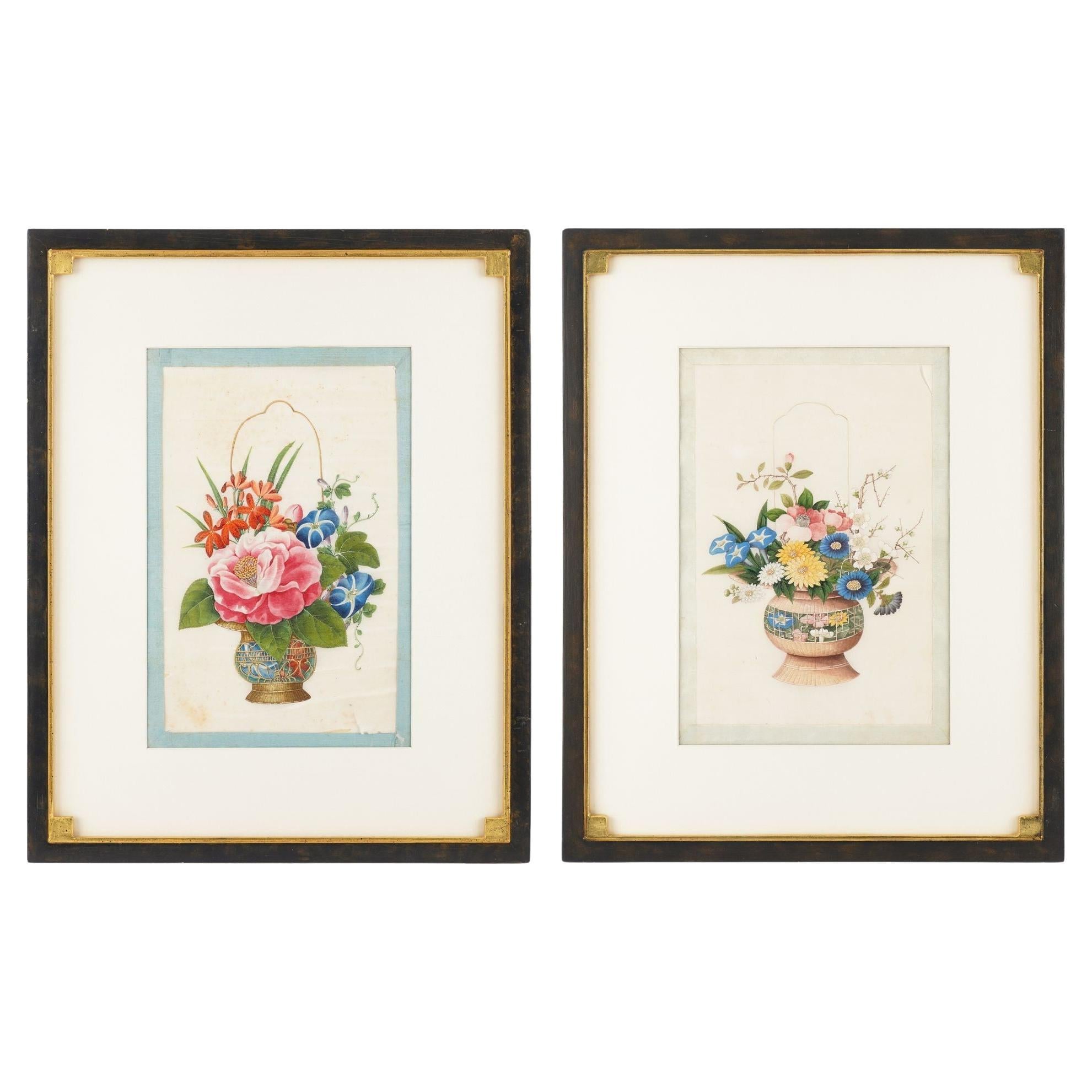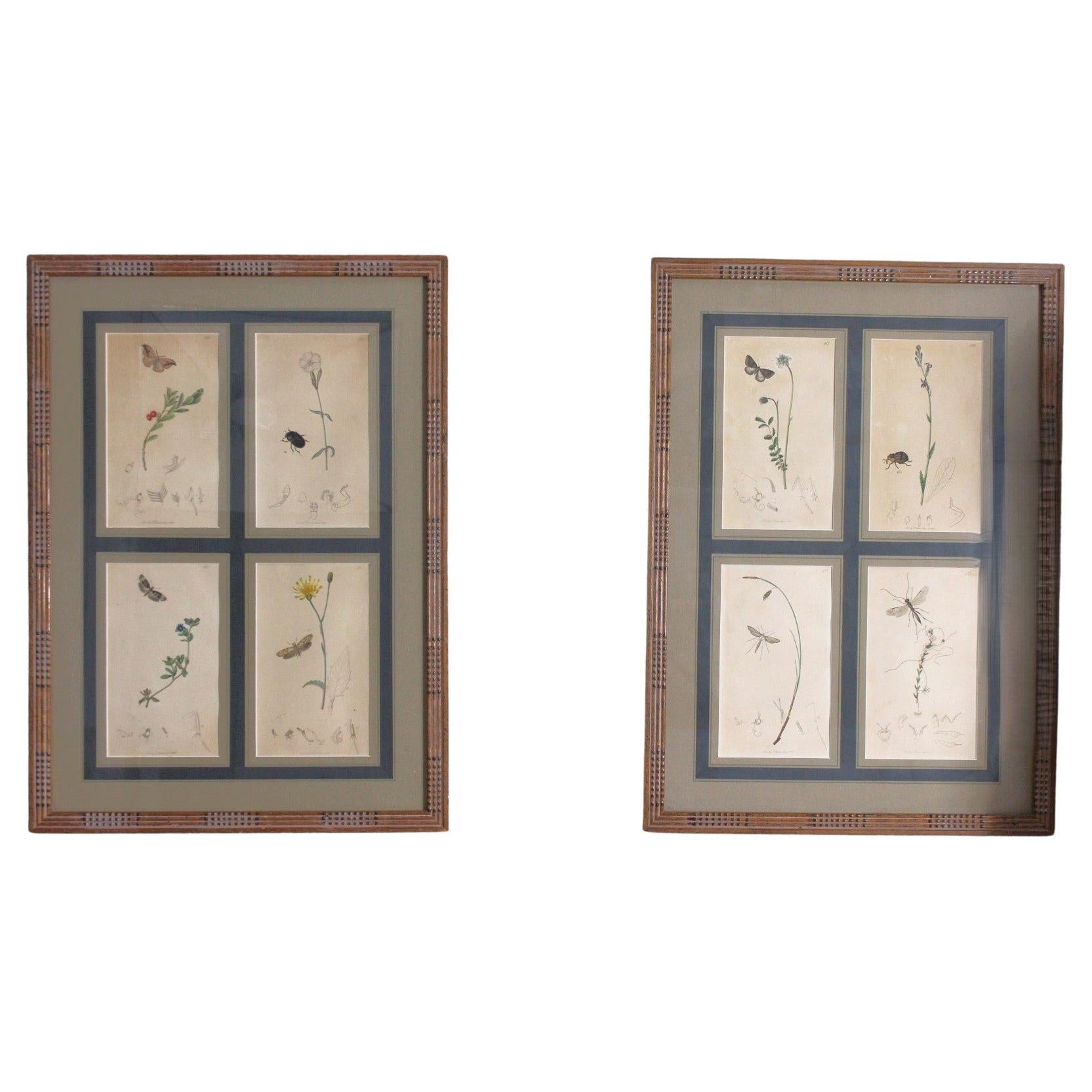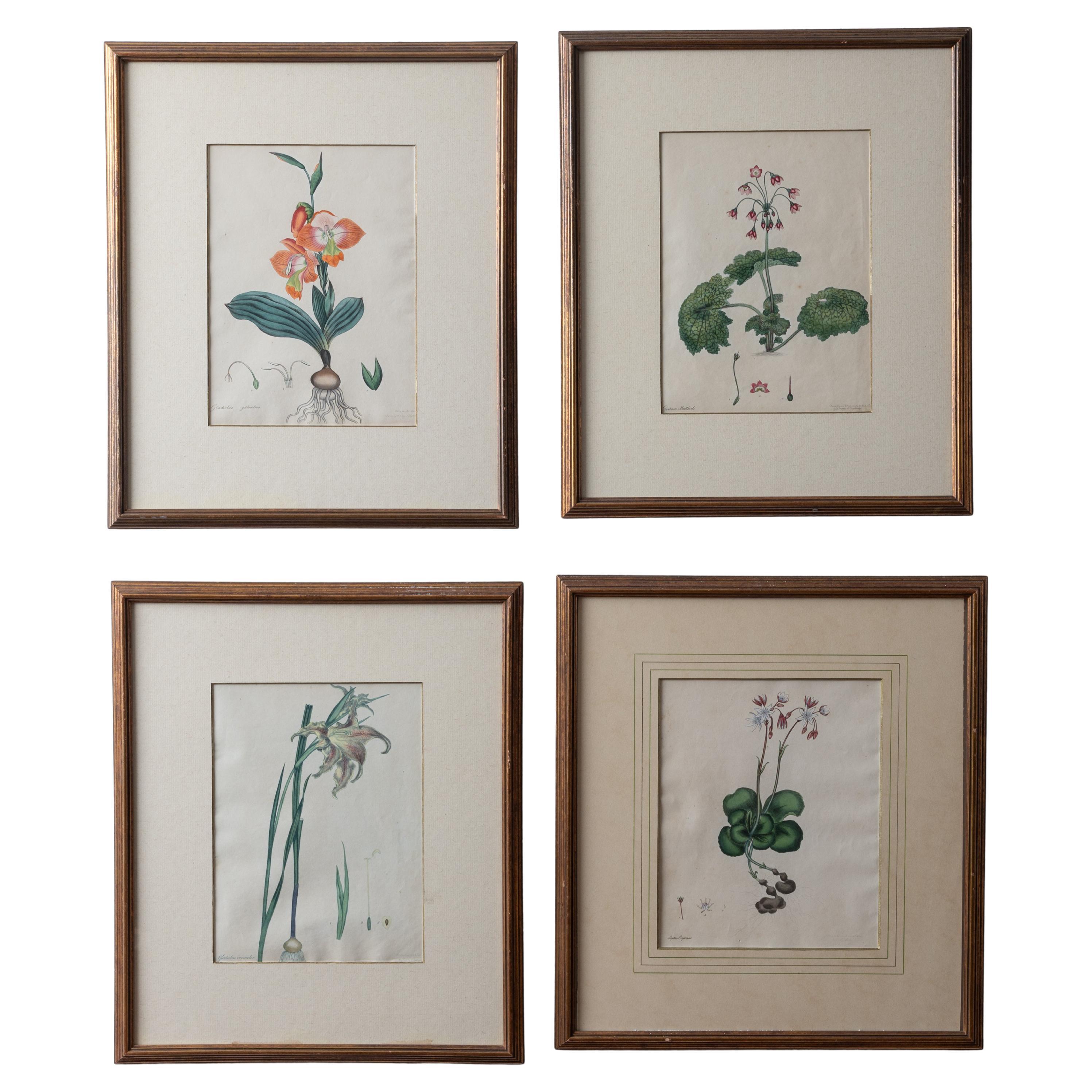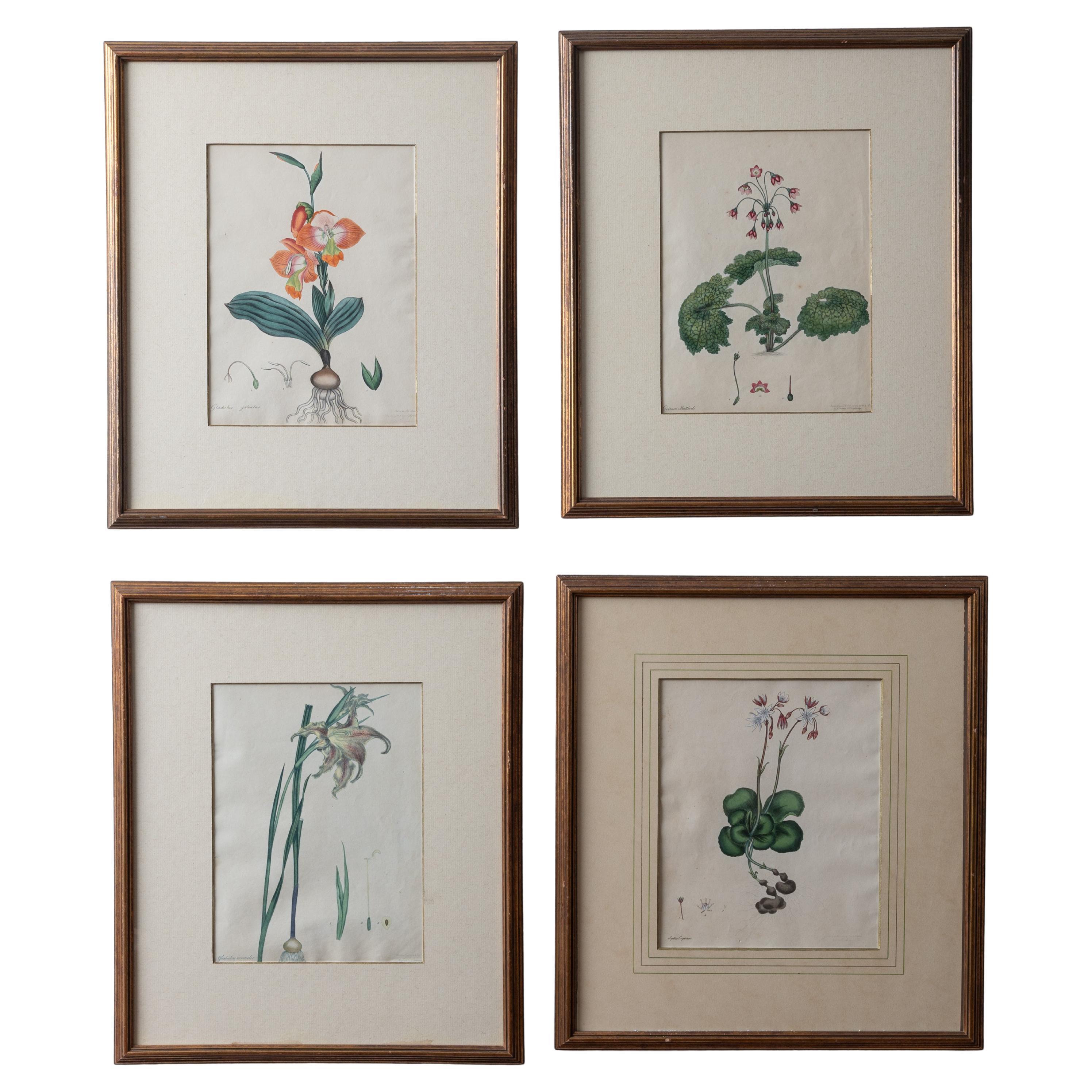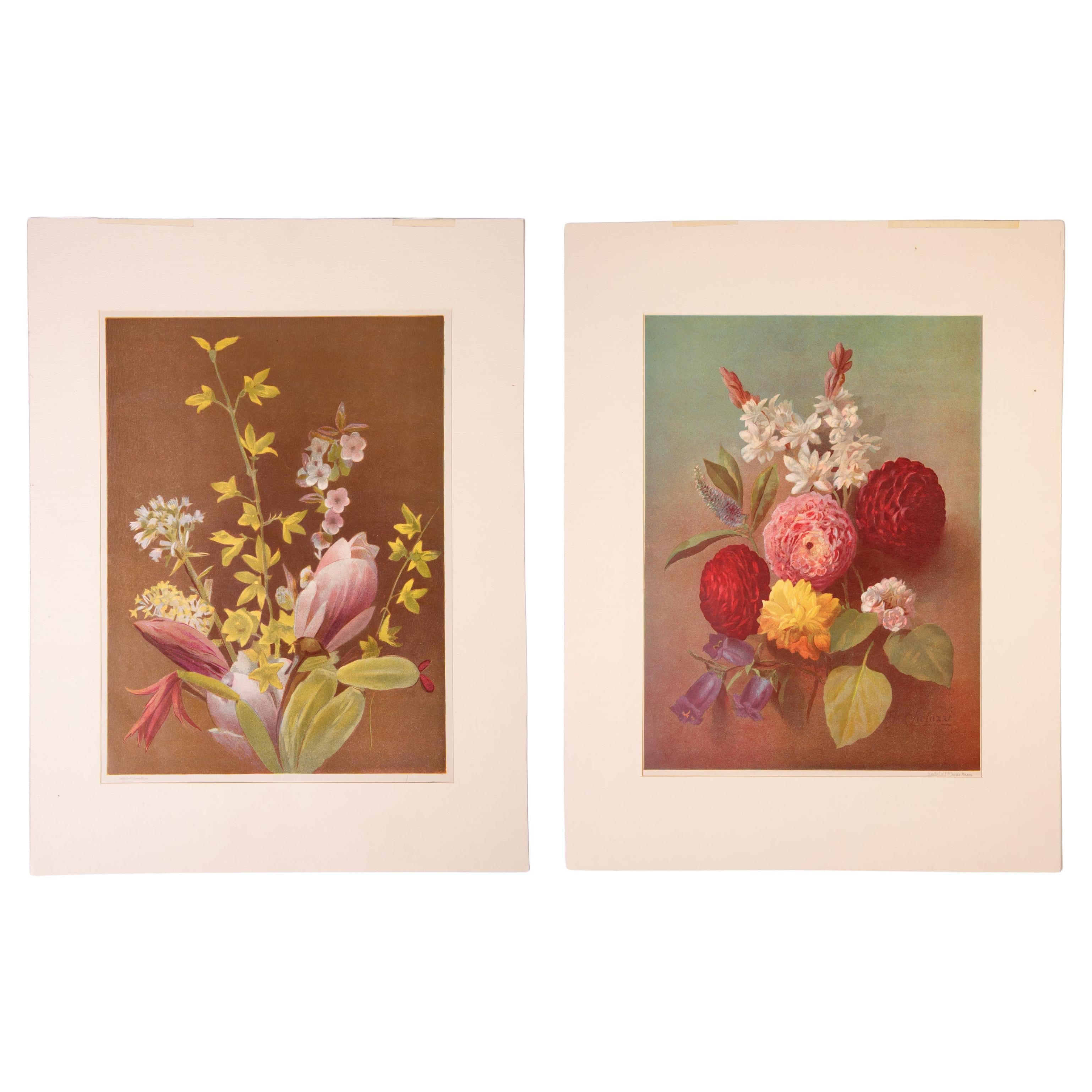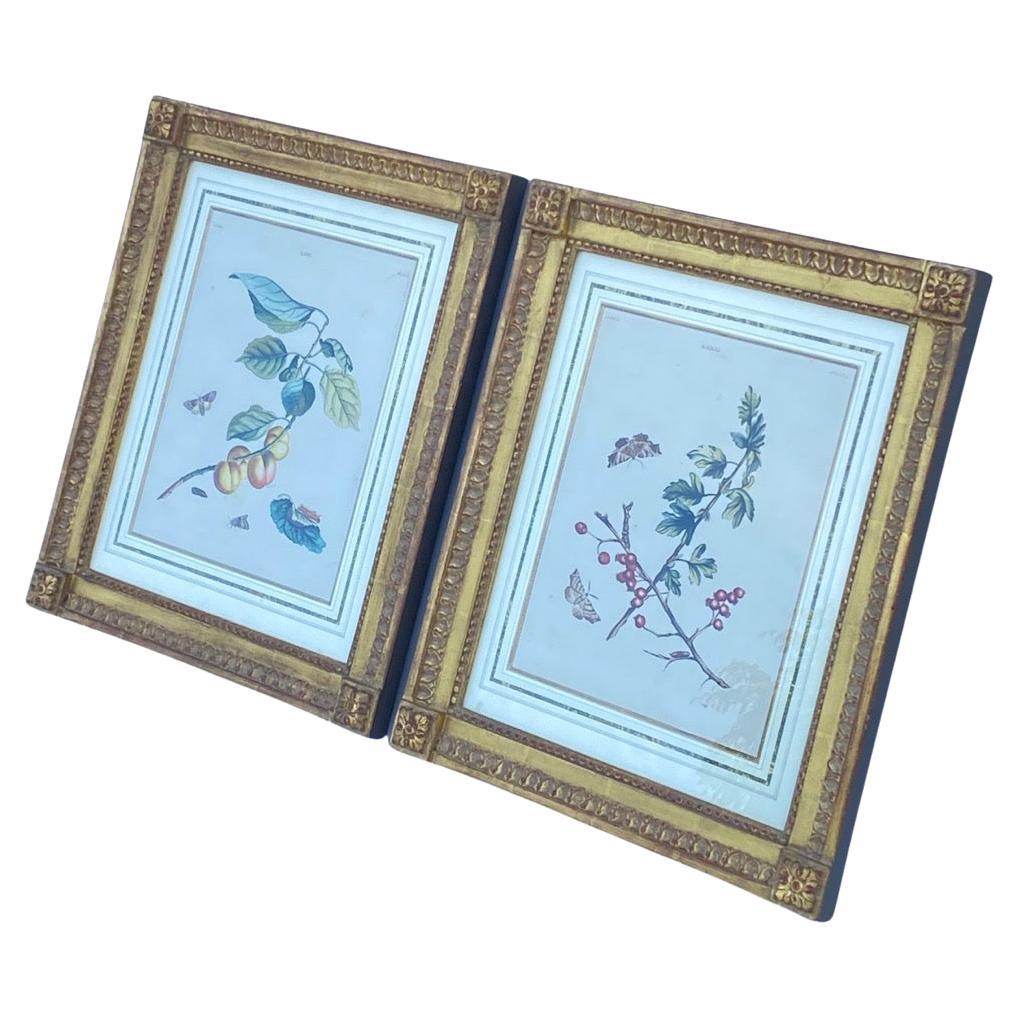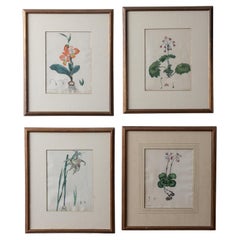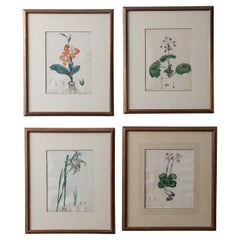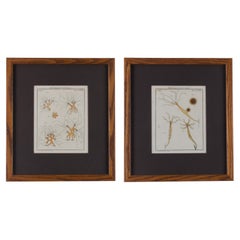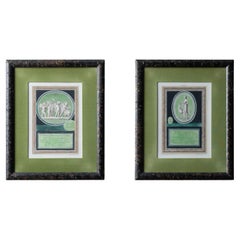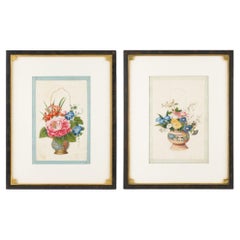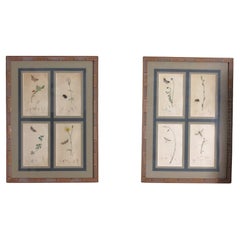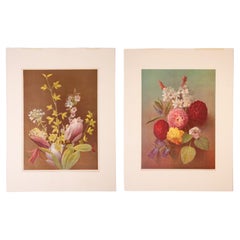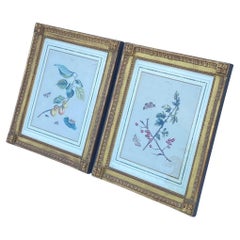Items Similar to Curtis Botanical Magazine Floral Prints c.1810
Want more images or videos?
Request additional images or videos from the seller
1 of 5
Curtis Botanical Magazine Floral Prints c.1810
$320per set
£245.73per set
€281.89per set
CA$449.64per set
A$503.57per set
CHF 262.75per set
MX$6,150.84per set
NOK 3,342.97per set
SEK 3,151.15per set
DKK 2,103.71per set
About the Item
Sydenham Teast Edwards
(British, 1768-1819)
A pair of botanical prints from Curtis’s Botanical Magazine, circa 1810 illustrated by Syd Edwards.
Plate 705: Porcelane Flowered Gentian
Plate 725: Glaucous-Leaved Amaryllis
sight 5 by 8 inches
frame 15 ¼ by 19 ¼ inches
- Dimensions:Height: 19.25 in (48.9 cm)Width: 15.25 in (38.74 cm)Depth: 0.75 in (1.91 cm)
- Sold As:Set of 2
- Materials and Techniques:
- Place of Origin:
- Period:
- Date of Manufacture:1810
- Condition:Wear consistent with age and use. Minor losses. Fair condition, one with tear, paper toning. Under a ribbed velvet mat, in distressed white painted frames.
- Seller Location:Savannah, GA
- Reference Number:1stDibs: LU9288244286332
About the Seller
5.0
Platinum Seller
Premium sellers with a 4.7+ rating and 24-hour response times
Established in 2013
1stDibs seller since 2023
76 sales on 1stDibs
Typical response time: <1 hour
- ShippingRetrieving quote...Shipping from: Savannah, GA
- Return Policy
Authenticity Guarantee
In the unlikely event there’s an issue with an item’s authenticity, contact us within 1 year for a full refund. DetailsMoney-Back Guarantee
If your item is not as described, is damaged in transit, or does not arrive, contact us within 7 days for a full refund. Details24-Hour Cancellation
You have a 24-hour grace period in which to reconsider your purchase, with no questions asked.Vetted Professional Sellers
Our world-class sellers must adhere to strict standards for service and quality, maintaining the integrity of our listings.Price-Match Guarantee
If you find that a seller listed the same item for a lower price elsewhere, we’ll match it.Trusted Global Delivery
Our best-in-class carrier network provides specialized shipping options worldwide, including custom delivery.More From This Seller
View AllHenry C. Andrews Botanical Prints, c.1790s - set of 4
Located in Savannah, GA
Henry Cranke Andrews
(British, 1759-1835)
A set of four hand-colored botanical engravings published in the 1790s.
14 ¾ by 17 ½ inches
Category
Antique 1790s British Prints
Materials
Glass, Wood, Paper
Henry C. Andrews Botanical Prints, c.1790s - set of 4
Located in Savannah, GA
Henry Cranke Andrews
(British, 1759-1835)
A set of four hand-colored botanical engravings published in the 1790s.
14 ¾ by 17 ½ inches
Category
Antique 1790s English Prints
Materials
Glass, Wood, Paper
Historiae Polyporum by Rösel von Rosenhof c.1765- A Pair
Located in Savannah, GA
August Johann Rosel von Rosenhof
(British, 1810-1893)
A set of two framed hand-colored engraving on hand laid paper from Historiae Polyporum., by Augustus Johannes Roesen von Rosenh...
Category
Antique 1760s German Prints
Materials
Glass, Wood, Paper
Cosimo Colombini Engravings, c.1760s
Located in Savannah, GA
Cosimo Colombini engravings of antique gems with hand-coloring, circa 1760s.
sight: 6 ¾ by 9 ¾ inches
frame: 12 ½ by 15 ½ inches
Category
Antique 1760s Classical Roman Prints
Materials
Glass, Wood, Paper
$700 / set
A Pair of Alken Hunt Scenes, 19th Century
Located in Savannah, GA
A pair of hand-colored Henry Alken hunt scenes published by Tregear and Co. in Hogarth frames, first half of the 19th century:
"The Death" engraved by Phelps and “Getting Away” engra...
Category
Antique Early 19th Century British Victorian Prints
Materials
Glass, Wood, Paper
$1,200 / set
John Pass after Reinhold Eagle Engravings, c.1805
Located in Savannah, GA
John Pass
(British, 1793-1832)
A pair of hand-colored engravings after the paintings by Johann Lebrecht Reinhold, c. 1805
The Griffard Eagle, and the Boatman.
The Noisy Eagle, and t...
Category
Antique Early 1800s British Prints
Materials
Glass, Wood
You May Also Like
Pair of Chinese botanical paintings by Sunqua, c. 1800-50
By Sunqua
Located in Kenilworth, IL
Chinese export botanical painting on pith (rice) paper centering on an elaborately constructed basket arranged with a bouquet of mixed flowers. These customarily were painted in grou...
Category
Antique 19th Century Chinese Paintings
Materials
Paper
19th Century Botanical Engravings of flowers and insects
Located in Seaford, GB
Pair of 19th-century British plant botanicals Engravings with Insects – John Curtis (1791-1862)
Sold as a pair - Please let us know your choice on your purchase order:
1 - Dandeli...
Category
Antique 19th Century English Victorian Prints
Materials
Paper
Pair of Antique Flower Prints
Located in Alessandria, Piemonte
Pair of Italian prints , collected from "Winter Flowers" and "Autumn Flowers" dated 1894 - authors: Arnaldo Ferraguti and Tito Chelazzi.
Now I have only these two prints, because ...
Category
Antique Late 19th Century Italian Other Prints
Materials
Paper
$767 / set
Pair of 18th Century Framed Botanicals
Located in Los Angeles, CA
This pair of 18th century hand tinted lithographs have butterflies and insects throughout. The images themselves are 12" by 9" Framed in 22k giltwood frames by Jerry Solomon.
Category
Antique 18th Century French Neoclassical Prints
Materials
Giltwood, Paper
$2,850 / set
Victorian Floral Prints from The Museum of Flowers by Mary Elizabeth Rosenberg
Located in Atlanta, GA
English Victorian period floral prints from "The Museum of Flowers" by Mary Elizabeth Rosenberg, circa 1845, in custom giltwood frames under g...
Category
Antique 19th Century English Victorian Prints
Materials
Glass, Paper, Giltwood
Late 18 C W.Curtis Hand Coloured Botanical Lithograph Plates Faux Marble Mounts
Located in Lowestoft, GB
Decorative pair of late 18th century hand coloured lithograph plates of a Franklin Tartar and Black Hellebore.
Originally both part of the botanical book Flower Garden Displayed by ...
Category
Antique Late 18th Century English George III Decorative Art
Materials
Paper, Art Glass, Giltwood
More Ways To Browse
Antique Chest Of Drawers Ireland
Antique Chinese Eggs
Antique Chinese Headrest
Antique Chocolate Cup
Antique Clocks Philadelphia
Antique Flip Glass
Antique French Large Urn Porcelain
Antique Galvanized Metal
Antique Heywood Wakefield Chairs
Antique Hudson Bay
Antique Large Green Glass Bottle
Antique Lunettes
Antique Mahogany Folding Tea Table
Antique Medical Cabinets
Antique Mortise Lock
Antique Norwegian Cabinet
Antique Pantry Box
Antique Pot Belly
